Browse our Growing Library of Success Stories
By:
Working Lands for Wildlife Prescribed burns and strategic grazing practices have made the Nichols Ranch more profitable, as well as more productive for livestock and wildlife.
Prescribed burns and strategic grazing practices have made the Nichols Ranch more profitable, as well as more productive for livestock and wildlife.
By:
Working Lands for Wildlife
Chris and Cole Mushrush are keeping grasslands tree-free on their ranch in Strong City, Kansas, and using virtual fencing to repair eroding soils.
By:
Working Lands for Wildlife This ranch in the Sandhills relies on healthy prairies to support two businesses: a tourist-based outfitting company and for feeding cattle.
This ranch in the Sandhills relies on healthy prairies to support two businesses: a tourist-based outfitting company and for feeding cattle.
By:
Working Lands for Wildlife GREAT PLAINS ‘GUARDIANS OF THE GRASSLANDS SERIES | Scott Westrup was one of the first landowners in Oklahoma to sign up for the NRCS Great Plains Grassland Initiative to get rid of trees infesting his pastures.
GREAT PLAINS ‘GUARDIANS OF THE GRASSLANDS SERIES | Scott Westrup was one of the first landowners in Oklahoma to sign up for the NRCS Great Plains Grassland Initiative to get rid of trees infesting his pastures.
By:
Working Lands for Wildlife “Little Miss Clearcut” is restoring the prairie with loppers and a handsaw to keep woody invaders from taking over her grassland pastures.
“Little Miss Clearcut” is restoring the prairie with loppers and a handsaw to keep woody invaders from taking over her grassland pastures.
By:
Ted WilliamsFish are cold, slimy, unfeathered, unfurred, unheard, and usually unseen by non-anglers. So for the general public, including much of the environmental community, fish don’t count as wildlife.
By:
Leopold Conservation Award Program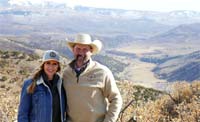 For Colby and McKenzie Pace, raising beef cattle includes keeping a sharp eye on preventing overgrazing and noxious weeds and seeking out ways to improve their land for nesting and migrating shorebirds. This forward-thinking approach to livestock and wildlife management earned the Coalville couple — and their Half Circle Cross Ranch — the 2020 Utah Leopold Conservation Award.
For Colby and McKenzie Pace, raising beef cattle includes keeping a sharp eye on preventing overgrazing and noxious weeds and seeking out ways to improve their land for nesting and migrating shorebirds. This forward-thinking approach to livestock and wildlife management earned the Coalville couple — and their Half Circle Cross Ranch — the 2020 Utah Leopold Conservation Award.
By:
Leopold Conservation Award Program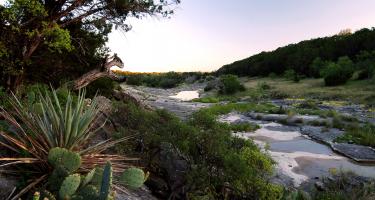 The Treadwell Brady Ranch implements all five of famed conservationist Aldo Leopold’s essential tools: axe, cow, plow, fire and gun. Efforts include habitat management, erosion control, supplemental food, water and shelter for wildlife, predator control, and wildlife population surveys.
The Treadwell Brady Ranch implements all five of famed conservationist Aldo Leopold’s essential tools: axe, cow, plow, fire and gun. Efforts include habitat management, erosion control, supplemental food, water and shelter for wildlife, predator control, and wildlife population surveys.
By:
Leopold Conservation Award Program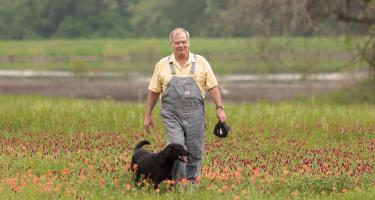 Dr. Robert McFarlane spent his youth hunting and fishing the lands and waters of the Middle Trinity River near Tennessee Colony. Those memories of the land stayed with him when he left for medical school at Harvard. When he returned, he saw a different landscape. It was fragmented, converted to pasture and farmland, and significantly different from the pristine land he remembered.
Dr. Robert McFarlane spent his youth hunting and fishing the lands and waters of the Middle Trinity River near Tennessee Colony. Those memories of the land stayed with him when he left for medical school at Harvard. When he returned, he saw a different landscape. It was fragmented, converted to pasture and farmland, and significantly different from the pristine land he remembered.
By:
Leopold Conservation Award Program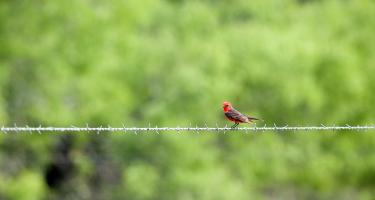 Arthur “Buddy” Temple purchased Temple Ranch, near Lufkin, in 1992. Since that time, Buddy and Ellen Temple, along with ranch operators, Robert and Jenny Sanders, have introduced many beneficial conservation practices.
Arthur “Buddy” Temple purchased Temple Ranch, near Lufkin, in 1992. Since that time, Buddy and Ellen Temple, along with ranch operators, Robert and Jenny Sanders, have introduced many beneficial conservation practices.
By:
Leopold Conservation Award Program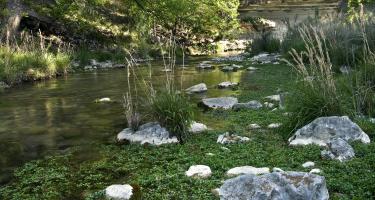 The Llano Springs Ranch, located 20 miles north of Rocksprings in Edwards County, is a true, family-run operation. The 5,100 acre ranch is owned and operated by Dr. Tom G. Vandivier, his children, Tom M. Vandivier and Ann Vandivier Brodnax and their families.
The Llano Springs Ranch, located 20 miles north of Rocksprings in Edwards County, is a true, family-run operation. The 5,100 acre ranch is owned and operated by Dr. Tom G. Vandivier, his children, Tom M. Vandivier and Ann Vandivier Brodnax and their families.
By:
Leopold Conservation Award Program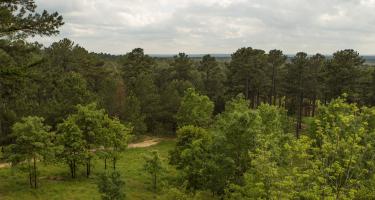 When the Winston family acquired their property just south of Nacogdoches in the 1980s, it was largely land that had been cut and not replanted. Since then, it has been carefully restored and transformed into a showplace on how to produce timber and quality wildlife habitat.
When the Winston family acquired their property just south of Nacogdoches in the 1980s, it was largely land that had been cut and not replanted. Since then, it has been carefully restored and transformed into a showplace on how to produce timber and quality wildlife habitat.
By:
Leopold Conservation Award Program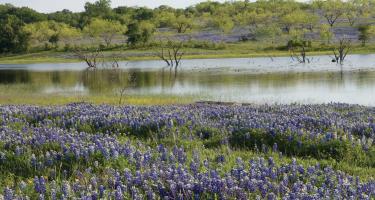 Gary and Sue Price’s 1,900 acre 77 Ranch in Navarro County is designed and run to be both economically and environmentally sustainable. The Prices do not make a business decision without first considering its environmental impact.
Gary and Sue Price’s 1,900 acre 77 Ranch in Navarro County is designed and run to be both economically and environmentally sustainable. The Prices do not make a business decision without first considering its environmental impact.
By:
Leopold Conservation Award Program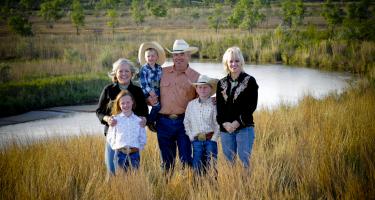 Jim Bill Anderson and his family are exceptional stewards of the land, water, and wildlife of Anderson Ranch, which is located in Canadian, Texas in Hemphill County, and is comprised of over 5,000 acres.
Jim Bill Anderson and his family are exceptional stewards of the land, water, and wildlife of Anderson Ranch, which is located in Canadian, Texas in Hemphill County, and is comprised of over 5,000 acres.
By:
Leopold Conservation Award Program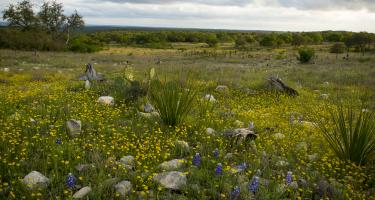 Blue Mountain Peak Ranch was once in a state of disrepair; its poor range health was a result of overgrazing, and the land was heavily dominated by blueberry juniper. When it was purchased by Richard Taylor and his late-wife Sally in 2001, it was their dream to rehabilitate the land to what it was before European settlement ? more live oak savannah grassland in the uplands, and a higher density of woody plants restricted mainly to the draws. For the past eight years, Suzie Paris, Richard and Sally’s longtime friend and now Richard’s partner, has been active in the ranch restoration.
Blue Mountain Peak Ranch was once in a state of disrepair; its poor range health was a result of overgrazing, and the land was heavily dominated by blueberry juniper. When it was purchased by Richard Taylor and his late-wife Sally in 2001, it was their dream to rehabilitate the land to what it was before European settlement ? more live oak savannah grassland in the uplands, and a higher density of woody plants restricted mainly to the draws. For the past eight years, Suzie Paris, Richard and Sally’s longtime friend and now Richard’s partner, has been active in the ranch restoration.
By:
Leopold Conservation Award Program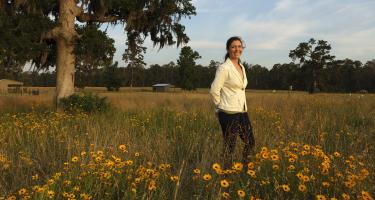 The George Mitchell family’s Cook’s Branch Conservancy, which consists of 5,650 acres in southeastern Texas, has been managed for nearly 50 years under a family tradition of conservation and sustainability.
The George Mitchell family’s Cook’s Branch Conservancy, which consists of 5,650 acres in southeastern Texas, has been managed for nearly 50 years under a family tradition of conservation and sustainability.
By:
Leopold Conservation Award Program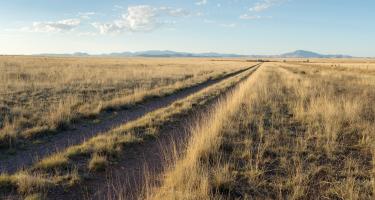 Spread across north central and southwest Texas, the five working ranches owned and managed by Dixon Water Foundation are sights to behold. Their mission, to promote healthy watersheds through sustainable land management to ensure that future generations have the water resources they need, has led to successful restoration of plant diversity, improved watershed conditions and wildlife habitat across all of their ranches.
Spread across north central and southwest Texas, the five working ranches owned and managed by Dixon Water Foundation are sights to behold. Their mission, to promote healthy watersheds through sustainable land management to ensure that future generations have the water resources they need, has led to successful restoration of plant diversity, improved watershed conditions and wildlife habitat across all of their ranches.
By:
Leopold Conservation Award Program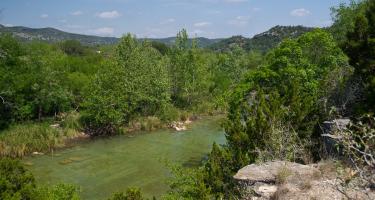 For more than three decades, Jack and Jan Cato have tirelessly pursued revitalization efforts on two ranches in two different ecological regions of Texas. Their Buckhollow Ranch is located in Uvalde and Real counties on the Edwards Plateau and the Stockard-Sirianni Ranch is in Frio County in the South Texas Plains eco region.
For more than three decades, Jack and Jan Cato have tirelessly pursued revitalization efforts on two ranches in two different ecological regions of Texas. Their Buckhollow Ranch is located in Uvalde and Real counties on the Edwards Plateau and the Stockard-Sirianni Ranch is in Frio County in the South Texas Plains eco region.
By:
Leopold Conservation Award Program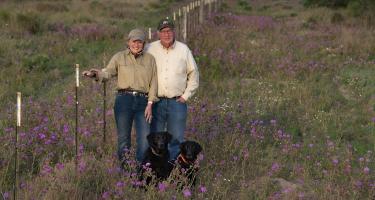 Wildlife habitat is flourishing in South Texas thanks to Laborcitas Creek Ranch.
Wildlife habitat is flourishing in South Texas thanks to Laborcitas Creek Ranch.
By:
K. Gregg Elliott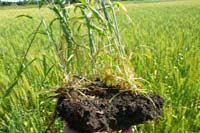 The nonprofit Soil Health Academy (SHA) is just one of many initiatives spawned by regenerative agriculture guru Gabe Brown in collaboration with additional expert partners. SHA holds regenerative agriculture workshops around the country that are open to anyone who’s interested, and they are routinely sold out.
The nonprofit Soil Health Academy (SHA) is just one of many initiatives spawned by regenerative agriculture guru Gabe Brown in collaboration with additional expert partners. SHA holds regenerative agriculture workshops around the country that are open to anyone who’s interested, and they are routinely sold out.